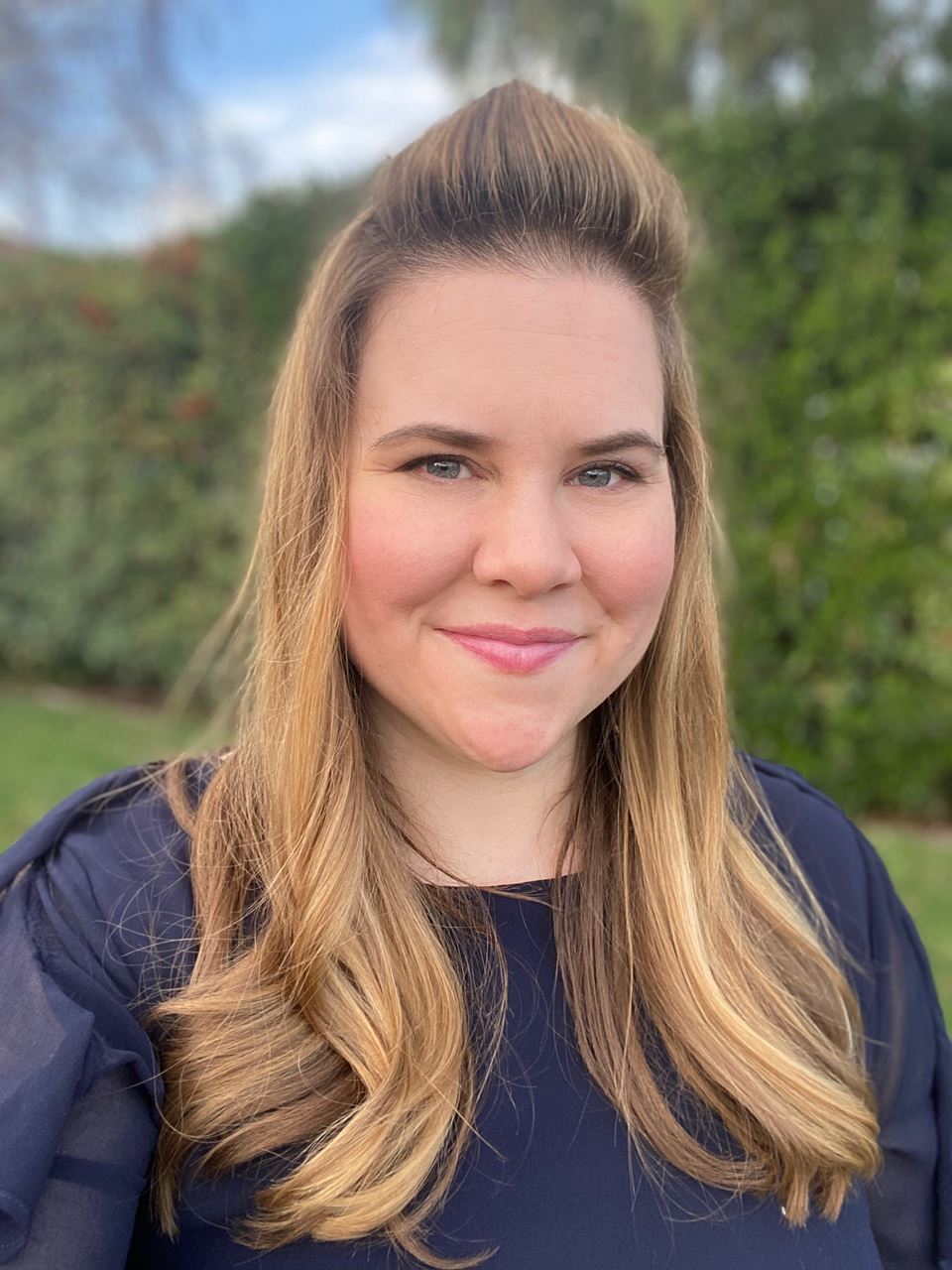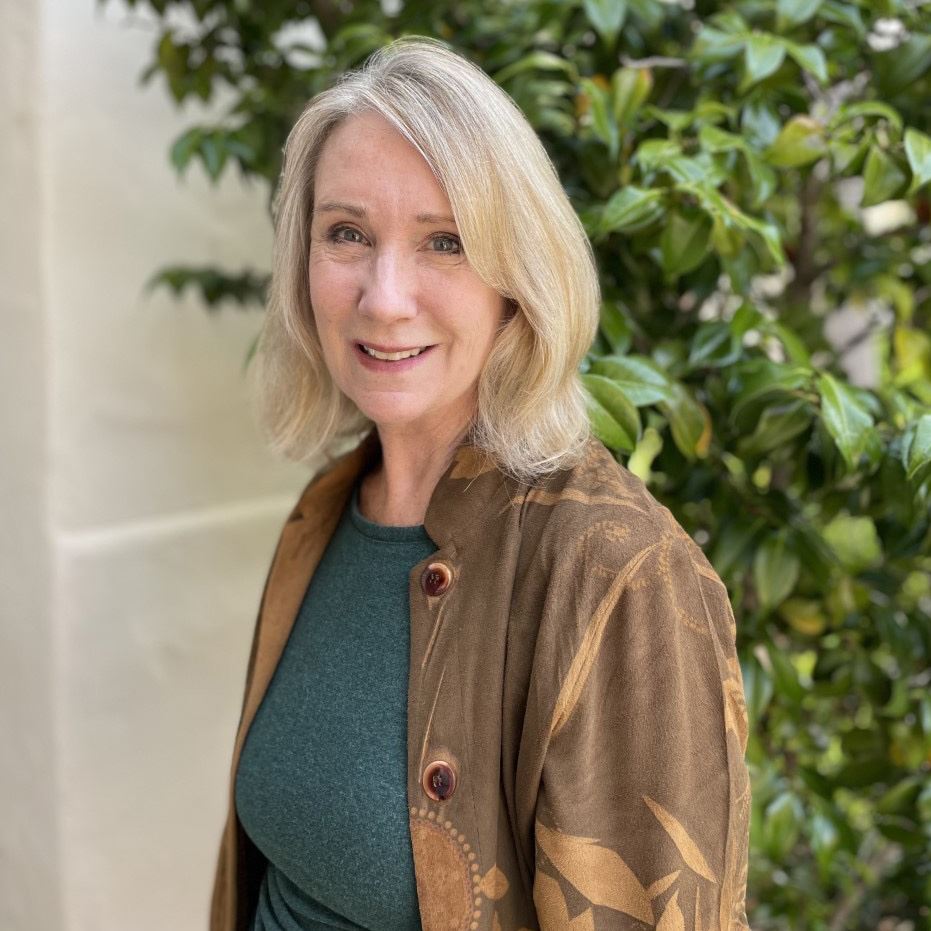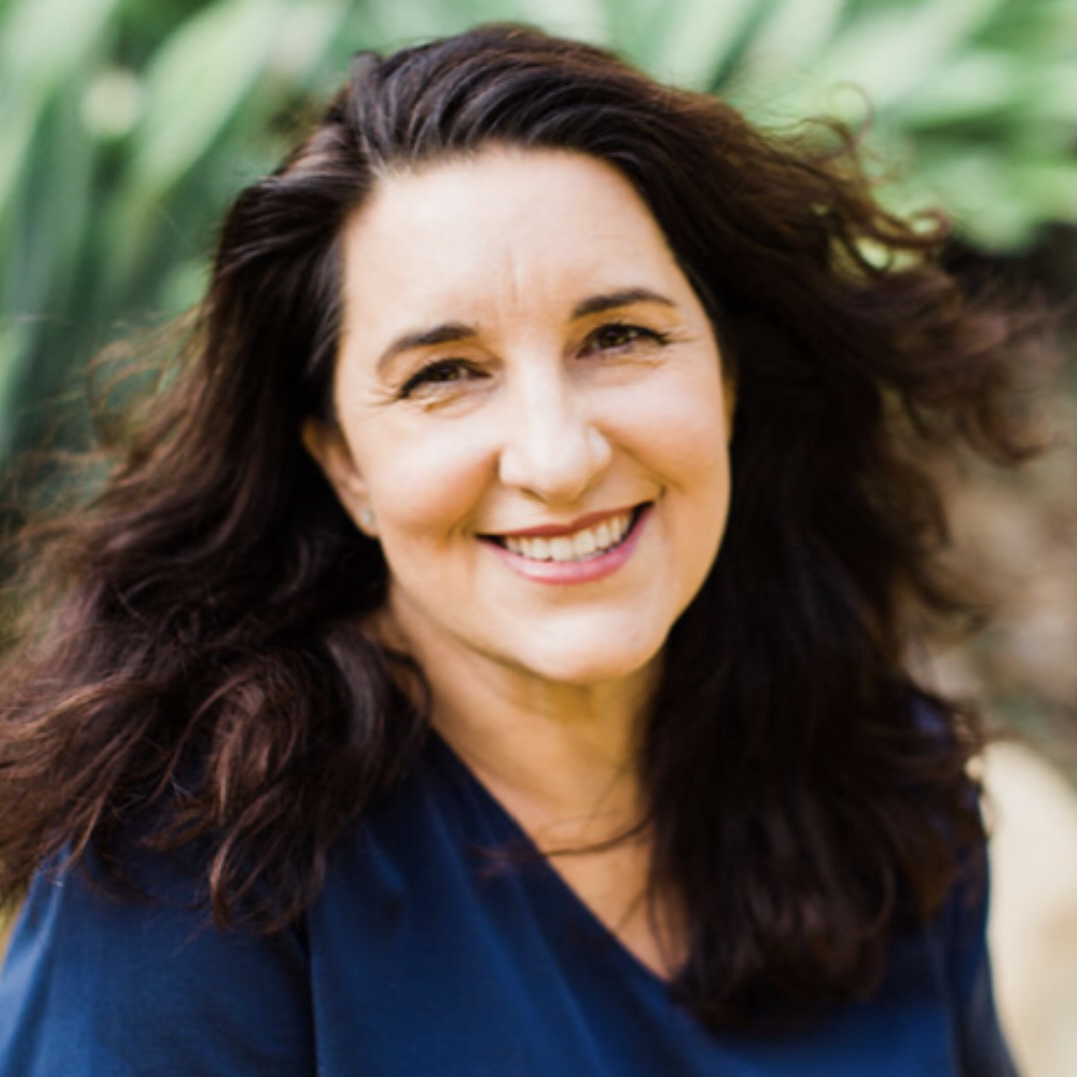
NEWSLETTER REFLECTIONS
SPRING 2023
How has your involvement in SBCAMFT lead to increased community and connection? In what ways have you been involved in the organization and how has that improved your professional life?

Reflection
Dr. Jenn Kennedy, PhD, LMFT
Click here to view Dr. Kennedy's video reflection.

Reflection
Karla-Julia Ramos, AMFT
In my role, I have also been responsible for creating and curating engaging content that resonates with the organization's members and followers. By doing so, I have been able to foster a sense of community among those who share a common interest in the field of mental health and therapy. This has led to increased engagement and participation in the organization's events and activities, as well as a deeper understanding of its mission and values.
Through my engagement with members and followers on social media, I have also been able to facilitate communication and discussion among professionals in the field. By creating a platform for open and honest dialogue, I have encouraged the exchange of ideas and perspectives, which has led to a deeper understanding of the challenges and opportunities facing the mental health community.
Finally, my involvement in SBCAMFT has provided me with numerous opportunities for networking and professional development. By attending conferences, workshops, and other events, I have been able to connect with like-minded individuals who share my passion for mental health and therapy. This has allowed me to expand my knowledge and skills, as well as to gain valuable insights into the latest developments and trends in the field. Overall, my involvement in SBCAMFT has been a rewarding experience that has allowed me to make a meaningful contribution to the mental health community while advancing my own personal and professional goals.PAST REFLECTIONS
WINTER 2023
|
 Reflection Dr. Rachel Aarons, LCSW If you are working with complex PTSD or have clients with a high ACE's score, you will very likely be confronting early childhood trauma in the form of abuse or neglect. I utilize EMDR as my preferred method of approach to healing trauma and it is impressive with trauma in general. However, with regard to very early trauma, EMDR leaves a gap. It cannot go back to the foundational roots of trauma in the earliest years where there is no language or explicit memory. It is like working on the upper stories of a building that has an unstable and unsound foundation. For this reason, I studied the work of Dr. Sandra Paulsen on her approach entitled "When there are no words" both as a therapist and as a client. The work utilizes historical information, developmental milestones, imagination and, most profoundly, sensations in the body that arise when exploring the client’s experience of their biofamily. Whenever negative feelings arise, a repair is done using the mythical family chosen by the client to symbolize what the child needed and deserved from parents in their earliest years. The focus of the therapy is on changing from the insecure attachment in their history to secure attachment in their imagination. In this way, negative core beliefs are transformed into new positive beliefs about who they really are. While crediting Dr. Paulsen’s work as the basic theoretical approach, I have been significantly modifying that approach as I work with a variety of traumatized clients to learn what they need in order to fully integrate a new set of core beliefs and a new positive view of themselves. It is having a dramatic effect in reducing the impact of early trauma and its reenactment in their lives. If there is interest, I am considering offering a practicum in the new year to share these insights with my colleagues. I can be reached at rachelbaarons@gmail.com or (805) 450-6365. | There's an App for That! Kady Fleckenstein, AMFT* Technology brings us so many new options in clinical practice that allow the work to continue outside of the office. Every month new mental health apps are released with tracking tools, CBT interventions, meditations and more. Here is a list of 5 of my favorite ways to use mobile applications (apps) in clinical practice: 1. Track Feelings: Apps like How We Feel can help both your client and you connect emotions to triggers and start to identify patterns that happen between sessions and is a lot more user-friendly than writing on paper! 2. Meditate: Finding the right meditation guide can be challenging. With apps like Headspace, Calm or Insight Timer, you can help your client see that there are many different types of meditations as well as different guides. They can choose the accent, tone and personality they like best! (Did you know, as a Santa Barbara County resident, you can sign up for a free Headspace account here?) 3. Help Your Clients Reconnect: Whether your couple clients are ready to spice up their sex life with sexy games on apps like Sex Roulette or reconnect with intimate questions to add depth to their conversations via Gottman Card Decks or Paired, there are many couple-friendly apps to benefit your couple clients. Be sure to wait and share with clients when they are ready! 4. Improve Sleep: Veteran Affairs' CBT-i Coach is a great accompaniment to therapy for insomnia. Clients can also use sleep meditations and stories via the same meditation apps mentioned above. Kids may enjoy apps just for them like Moshi Kids. 5. Medication Trackers: Let's face it, psychiatrist appointments are often short and may not take into account interactions between all medications and supplements a client is taking. As therapists, it's important we have a big picture view of everything impacting our clients' lives. There are many pill reminder apps that can be helpful for clients who forget to take their medications but there are also apps that track symptoms, nutrition and all medications (prescribed or over-the-counter). Combining these with a mood tracker (see #1 above) can really help us get accurate information from the client rather than having them rely on their memory alone. I find technology especially useful with my telehealth clients. I could go on and on but I'll leave you with those 5 ways to utilize apps to work for you and your clients. Enjoy! Have apps or technology you recommend? I would love to hear from you: kady@syvtherapy.com or (805) 694-8297. You can find more about my practice here: www.santaynezvalleytherapy.com. *AMFT (#136799), Supervised by Nicole A. Botaitis, LMFT (#47319) & LPCC (#227) |
FALL 2022
My Non-Diet Approach Petra Beumer, MA Diets fail when emotional eating is not addressed. I have developed a mindful approach to weight loss and emotional eating. My program is deeply rooted in positive psychology as well as self-compassion and mindfulness principles. During our initial consultation my clients share their unique weight loss journey and diet history. Many (or most) started struggling with this issue when they were children. Damaging messages such as: “You are getting fat.” created shame and a sense of “not being enough.” A child needs to be loved and accepted - unconditionally - not criticized or shamed. When food becomes the enemy, feeling at home in your body turns into a difficult and daunting task. How can one break this unhealthy (and unhelpful) cycle after years and years of negative programming? It takes a gentle and loving approach of embracing the emotional wounds. Wounds can heal; it may take time but they can! Daily rituals of self-kindness and self-compassion will serve as “medicine” over time. We can give to ourselves what wasn’t given to us when we were little. I know. I have done it. Clients who invite in the scared and hurt part of themselves can begin to reframe the old negative messages and heal their relationship with food and their body over time. This is a gentle and slower process, which aims at creating an inner shift - without pressure, expectations or dietary restrictions. The “shift” can be felt as a greater sense of inner calm, less anxiety and even new moments of joy. Our truth and our wisdom resides in our bellies. My job as a counselor is to help navigate the inner journey in the safest way possible. When your body never served as a “safe home” we need to befriend it slowly, gently and with great care. There is no rush. Healing is not linear. Let me be your guide. | 
Erin Pollaro, LMFT As an integrative practitioner with a wide range of clients who deeply loves so many aspects of my job, it’s challenging to narrow down and succinctly describe a modality, niche or specialty for which I am grateful. “The work”, as we all know, is immensely complex, and I have high regard for all the many layers involved. But succinct I will try to be: Over the years I’ve become more and more aware of how social injustice— bias embedded throughout culture and unresolved collective trauma— has a significant role in the hurt experienced by every individual who sits on the couch across from me. I see how someone’s parents’ and grandparents’ trauma influenced the way they showed up as parents however many years ago, and how that “showing up” the best they could often caused harm to the person sitting before me now. I understand how toxic, mainstream messages around who and what is valuable erodes one’s sense of self, invades thoughts and beliefs, and becomes a destructive delusion. I am incredibly grateful to see these shadows that burden people, because when I include this context into the reflection I provide my clients, then they can see it, too. Clients who wonder what’s wrong with them, who live with self-criticism and self-doubt—whether raw and tender on the surface or buried deeply under massive defenses— they can start to look up and outside of themselves. They start to see how they got here and why they’ve behaved the way they have. They begin to challenge their habitual thoughts and question long held beliefs. As their perspective shifts, compassion grows, and they begin to see themselves less often as a failure, and more and more as a survivor. Through this system of providing generational and cultural context, I have the utmost privilege of witnessing folks coming into contact with their deepest, most wholesome, truest selves. I get to see that when folks are healthy, their intuition is sharp and their love is powerful. I may be providing the service, but what I receive is hope and faith in humanity. Despite all of the trauma and suffering reverberating around and through our planet, what I see in the room is that people are wonderful and have the capacity to be wise. To know and witness this goodness is something for which I am profoundly grateful. |
My Diverse Approach Annie Finch, AMFT I am blessed to work with a diverse clientele. I specialize in treating clients with anxiety and trauma and am trained in EMDR. I work with couples using the Gottman Method and Emotionally Focused Therapy. As well as being an AMFT, I am a certified substance use treatment counselor. My go-to, know-it-in-my-bones modality is CBT, and I am grateful that it can be applied to a diverse clientele, individuals, groups and couples. However, CBT is not for everyone, so knowing and using other theories and modalities is essential in my work. I love humanistic-existential psychology. The juice is when clients develop awareness that they can make authentic, meaningful, self-directed choices. I have witnessed the light of understanding shine in their eyes; it is a truly spiritual and humbling experience. The other essential tool in my toolbox is using the basics of neuropsychology and attachment theory. I believe that it depathologizes and helps develop awareness about the why of the problem and then informs how to treat symptoms and promote healing. |
Yolanda Yturralde, LMFT I am grateful for my life in Santa Barbara, for being able to make a difference in the lives of my clients and family, to live near the glorious nature between sea and hills. To speak about gratitude is a regular occurrence in my private practice today. I was burned out after seeing double the amount of highly traumatized and distressed clients over the past several years and recently began to expand my own contemplative practices. I've been teaching mindfulness to school-aged children since my ninth grader twins were in kindergarten! Now, through several Mindfulness Based Cognitive Therapy practices (EMDR, Clinical Hypnosis and now KAP), my clients are also speaking of gratitude and peace. In case you may not have heard about KAP (Ketamine-Assisted Psychotherapy) or ketamine I wanted to pass on a little bit of information. KAP is a psychotherapy practice in which clients are prescribed the medicine and I provide psychotherapy to support its use. Just as with all psychopharmacology, all of the medical portion is handled by a team of medical prescribers. KAP became an interest of mine this year after following the Multidisciplinary Association for Psychedelic Studies (MAPS) research for the past twenty years on Psychedelic Assisted Psychotherapy. Many mental health practitioners have been awaiting the legality of these once highly researched, successful and clinically used substances. Today, one such substance, ketamine, is legal and available (from medical professionals directly to our clients) for clinical use with trained, licensed professionals. This quote from a MAPS article by Michael Ziegler on KAP sums up why I’m grateful for this new psychedelic-assisted psychotherapy: "Ketamine’s potential lies in its ability to catalyze individual transformation. The primary effect of ketamine seems to be its ability in recipients to shift their awareness from one fixated mind-state or perspective to a new one. Hopefully and usually, this kind of paradigm shift leads to a more enlightened view of their human condition. With adequate attention given to set and setting in its application, this can lead to better personal behavior. A radical shift of awareness can break the cycle of depression. A paradigm shift of awareness can also bring a person into a new relationship with their addictions. Users have reported that ketamine can also occasion profound non-dual and transpersonal experiences that provide them with a deeper understanding of their place in the world. Our evolving relationship with consciousness as revealed with this unique molecule may move us towards greater sensitivity, awareness, and compassion for ourselves and our fellow travelers on the planet." -- If you would like to experience a renewed sense of gratitude and peace for yourself or a client let me know if I can help. For more info on KAP in my private practice, please see my website. |
SUBMIT YOUR REFLECTION We want to hear from you! Promote your practice, specialty or other thoughts on each quarterly topic. Find the prompt and how to submit your reflection here. READ OUR NEWSLETTERS We're all super busy and it can be hard to read newsletters when they pop up in our inbox. Click here to access current and past newsletter to read at your convenience. |



